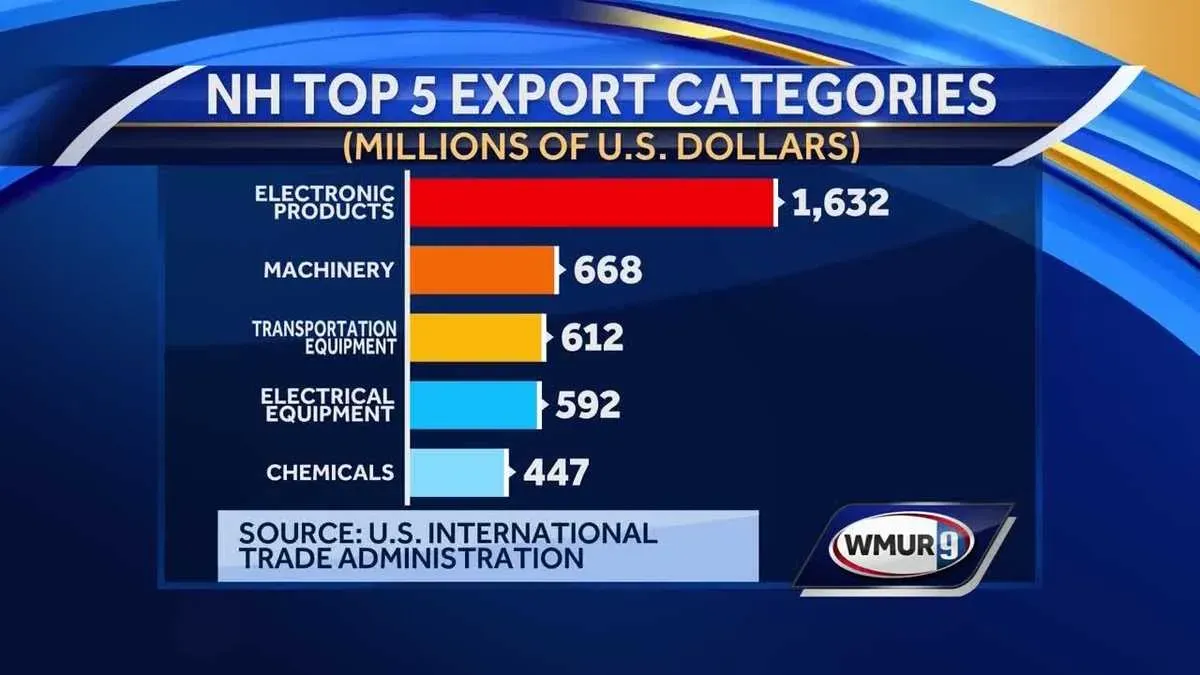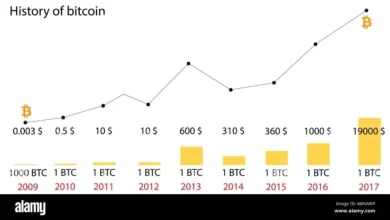EU Tariff Proposal: A ‘Zero-for-Zero’ Offer to Trump

The EU tariff proposal presents a significant initiative by European Commission President Ursula von der Leyen, who recently proposed a “zero-for-zero” tariff scheme to the United States. As tensions continue to rise from the Trump trade war, this proposal aims to dismantle industrial tariffs that could potentially lead to retaliatory measures. Historically, both the U.S. and EU have engaged in discussions surrounding the elimination of tariffs, particularly during the TTIP negotiations, which stalled under the previous administration. Von der Leyen’s current offer highlights Europe’s willingness to engage in negotiations and seek beneficial trade relations. In this complex landscape of U.S.-EU trade relations, the proposal seeks to ease barriers and foster a more collaborative commercial environment.
In light of ongoing trade tensions, the recent initiative from European leaders emphasizes a strategic approach towards harmonious economic interactions. The suggestion of a mutual elimination of tariffs on industrial goods could signal a crucial turning point following years of discord stemming from protectionist policies. As the EU seeks to strengthen its trade relationships, this move can be seen as a proactive step to stabilize markets rattled by the uncertainty of recent tariffs. By advocating for a comprehensive reduction of duties, the EU aims not only to protect its interests but also to cultivate an amicable trade environment with the U.S. This renewed emphasis on collaborative trade partnerships reflects the EU’s commitment to fostering sustainable economic growth in an increasingly competitive global market.
Understanding the EU’s Zero-for-Zero Tariff Proposal
The EU’s zero-for-zero tariff proposal represents a strategic effort to engage positively with the United States amidst mounting trade tensions. European Commission President Ursula von der Leyen emphasized that this offer aims to eliminate tariffs on industrial goods altogether, hoping to prevent retaliatory actions that could escalate into a trade war. By facilitating a zero-for-zero agreement, the EU is advocating for a balanced trading environment, reflecting on past negotiations such as the TTIP, where potential tariff elimination was also a focal point.
In the context of current U.S. trade dynamics, the zero-for-zero initiative could greatly benefit both parties. Not only does it open avenues for smoother U.S.-EU trade relations, but it also positions the EU as a proactive negotiator willing to reduce barriers that historically hindered their economic interactions. This proposal, if accepted, could mark a significant shift in the landscape of industrial tariffs and further enhance economic cooperation between the EU and its key trading partner, the U.S.
The Impact of Trump’s Trade War on U.S.-EU Relations
President Trump’s trade war has significantly altered the landscape of U.S. and EU relations, introducing substantial tariffs that have raised concerns among investors and stakeholders across the Atlantic. The recent implementation of a 20 percent tariff by Trump on EU products marks a worrying escalation, shattering the previously steady trading relationship and leading to elevated trade barriers. As the EU grapples with these new tariffs, it has become crucial for the union to devise effective responses that can mitigate the adverse impacts of these measures.
Market reactions to Trump’s trade policies have been turbulent, prompting considerable declines in stock values and a climate of uncertainty. As Europe navigates these challenges, von der Leyen’s zero-for-zero tariff proposal emerges as a strategic countermeasure to stabilize relations. The urgency to initiate dialogue reflects an understanding that navigating the intricacies of the Trump trade war requires collaborative strategies that reinstate trust and foster mutual economic growth.
Ursula von der Leyen’s Role in Trade Negotiations
As the European Commission President, Ursula von der Leyen plays a pivotal role in steering trade negotiations between the EU and the U.S., framing discussions around pivotal issues such as industrial tariffs. Her recent emphasis on a zero-for-zero tariff scheme underscores her commitment to de-escalating tensions and fostering a collaborative trading climate. By articulating these proposals in front of global media, von der Leyen positions herself as a key figure advocating for fair trade practices amidst an era characterized by protectionism and trade disputes.
Von der Leyen’s approach encapsulates the broader EU strategy of remaining open to negotiations while preparing to defend its interests. The balancing act she performs is vital in ensuring that Europe does not appear passive in the face of aggressive U.S. trade policies, thereby maintaining the EU’s strong footing on the world economic stage.
Potential Outcomes of the Zero-for-Zero Tariff Agreement
If the zero-for-zero tariff agreement gains traction, it could revolutionize U.S.-EU trade relations by creating a precedent for increased economic cooperation. The removal of tariffs on industrial goods could boost industries on both sides, particularly in high-demand sectors such as automotive and pharmaceuticals. The implications extend further, as a successful agreement could ripple through global markets, enhancing supply chains and consumer access to a wider range of products at lower prices.
Moreover, a successful zero-for-zero agreement might catalyze further negotiations on other contentious trade issues, potentially paving the way for a more comprehensive trade arrangement similar to the previously discussed TTIP. Establishing a baseline for tariff structures could help rectify existing imbalances, benefitting various economic sectors while reassuring investors of a more stable economic environment moving forward.
EU Response to U.S. Tariffs on Industrial Goods
The EU’s response to the U.S. tariffs imposed under Trump’s administration has been one of strategic resilience and calculated negotiation. The 20 percent tariffs have redoubled efforts within the EU to defend its economic interests while proposing compromises such as the zero-for-zero tariff strategy. This counteraction is vital for protecting EU-based industries from adverse effects while maintaining their competitive edge in the global market.
As discussions unfold, EU officials, including Trade Commissioner Maroš Šefčovič, have emphasized the need for a well-prepared response, highlighting that the EU’s trade ministers are actively engaged in formulating countermeasures. The readiness to enact a robust list of retaliatory measures suggests that Europe is not only prepared to negotiate but also committed to defending its market from unfair trading practices.
Market Reactions to Trade Negotiation Developments
Recent trade negotiation developments have elicited significant market reactions, with global financial markets affected dramatically by the back-and-forth between the U.S. and EU. The uncertainty surrounding Trump’s aggressive tariff policies, juxtaposed with the EU’s zero-for-zero proposal, has created volatility that has left investors wary. For European markets, the recent drop in stock values highlights the potential impact of any lasting trade conflict and the need for swift resolution to restore confidence.
On the flip side, if successful negotiations lead to a reduction in industrial tariffs, markets could respond positively as confidence in stable trade relationships returns. Investors tend to favor predictable environments, and the prospect of a zero-for-zero tariff agreement would serve as a positive signal for economic stability across the transatlantic alliance.
The Importance of Countermeasures in Trade Negotiations
Trade negotiations often involve the possibility of countermeasures, reflecting the contentious nature of international trade. The EU’s readiness to respond to U.S. tariffs with its own countermeasures showcases the importance of protecting economic interests while engaging in diplomatic dialogue. Von der Leyen’s statement about preparing countermeasures underscores the EU’s determination to be taken seriously and to send a clear message that aggressive trade tactics will not go unchallenged.
Implementing countermeasures against U.S. tariffs would not only aim to protect European industries but also serve as leverage during negotiations. By demonstrating its willingness to respond decisively, the EU reiterates its commitment to fair trade principles and its readiness to engage comprehensively in discussions surrounding tariff elimination.
Prospects for Future Trade Relations Between the U.S. and EU
The prospects for future trade relations between the U.S. and EU hinge significantly on the outcomes of ongoing negotiations and the re-evaluation of tariff policies. The zero-for-zero tariff proposal represents a potential turning point that could reshape the landscape of transatlantic trade, allowing both partners to focus on mutual benefits rather than punitive barriers. Establishing a cooperative framework for industrial goods could reinvigorate economic opportunities between the two powerhouses.
Looking ahead, the success of these negotiations will depend on sustained dialogue and collaboration to address underlying trade concerns. As both sides maneuver through complex economic landscapes, embracing cooperative agreements such as the zero-for-zero tariffs can redefine the U.S.-EU relationship, fostering a more resilient and mutually beneficial trade environment.
The Role of Trade Ministers in Addressing Tariff Issues
The engagement of trade ministers from EU member states plays a crucial role in addressing ongoing tariff issues and shaping the direction of negotiations with the U.S. Their recent meeting highlighted the coordinated efforts to tackle the U.S. tariffs on steel and aluminum while considering the broader implications of Trump’s trade war. By collaborating, trade ministers can present a united front, enhancing the EU’s negotiating position.
Furthermore, their discussions on potential retaliatory measures and responses to U.S. tariffs demonstrate the importance of strategic planning in international trade. As the EU navigates these complex issues, the collective actions and responses of trade ministers will significantly influence future interactions with the U.S., making their role paramount in protecting EU interests.
Frequently Asked Questions
What is the EU tariff proposal for zero-for-zero tariffs?
The EU tariff proposal entails a ‘zero-for-zero’ scheme aimed at eliminating all industrial tariffs on both sides of the Atlantic. This initiative, announced by European Commission President Ursula von der Leyen, seeks to create a fair trading environment and avoid escalating trade tensions, particularly amidst the backdrop of the Trump trade war.
How does the EU tariff proposal relate to U.S.-EU trade relations?
The EU tariff proposal is a crucial element in improving U.S.-EU trade relations. By offering zero tariffs on industrial goods, the EU aims to rebuild partnerships strained by recent trade barriers imposed during the Trump administration, particularly the significant 20 percent tariffs on EU imports.
What types of products are covered under the EU’s zero-for-zero tariff proposal?
The zero-for-zero tariff proposal covers a wide range of industrial products including cars, chemicals, pharmaceuticals, rubber, and plastic machinery. EU Trade Commissioner Maroš Šefčovič emphasized that this comprehensive approach is intended to enhance trade efficiency and eliminate barriers.
Why did Ursula von der Leyen propose the zero-for-zero tariffs now?
Ursula von der Leyen proposed the zero-for-zero tariffs in response to the recent escalation of tariffs by President Trump, which have raised U.S. trade barriers to unprecedented levels. The proposal is part of the EU’s strategy to prevent a retaliatory trade war and stabilize market conditions affected by Trump’s trade policies.
What was the historical context leading to the EU’s current tariff proposal?
The current EU tariff proposal is reminiscent of previous discussions held during the Transatlantic Trade and Investment Partnership (TTIP), where U.S. and EU negotiators nearly eliminated industrial tariffs. The failure to finalize TTIP under Trump’s administration led to increased trade barriers, spurring the renewed call for zero-for-zero tariffs.
What are the potential consequences of the EU’s tariff proposal on the market?
The EU’s tariff proposal could positively influence financial markets by alleviating some trade tensions that have resulted in significant market losses and volatility, especially following Trump’s recent tariff announcements. By potentially reducing tariffs, the proposal seeks to restore investor confidence and stabilize transatlantic trade.
Is the EU prepared for possible retaliation against U.S. tariffs?
Yes, the EU is prepared to respond with countermeasures if necessary. President von der Leyen indicated that, while the EU seeks to negotiate zero-for-zero tariffs, they are also ready to defend their interests through retaliatory actions if the U.S. continues with its aggressive tariff policies.
How might the zero-for-zero tariffs affect U.S. consumers?
Implementing the zero-for-zero tariffs could reduce prices for U.S. consumers by eliminating tariffs on imported industrial goods, which may lead to lower costs for products such as cars and chemicals. This could enhance competition and provide consumers with more options at potentially lower prices.
What prompted the EU’s call for a trade deal with the U.S. now?
The EU’s call for a trade deal, specifically the zero-for-zero tariff proposal, was prompted by recent tariff increases by President Trump that have strained trade relations and heightened market uncertainties. The EU seeks to establish a cooperative trading framework to mitigate the negative impacts of these tariffs.
What are the expected outcomes of the EU’s trade discussions with the U.S.?
The expected outcomes of the EU’s trade discussions include the possibility of implementing the zero-for-zero tariff scheme, which would enhance trade relations and foster economic growth on both sides of the Atlantic. It aims to create a more stable and predictable trading environment, benefiting industries and consumers alike.
| Key Point | Details |
|---|---|
| EU’s Tariff Proposal | The EU has proposed a ‘zero-for-zero’ tariff scheme for industrial goods to the U.S. |
| Commission President’s Statement | Ursula von der Leyen emphasized Europe is ready for a good deal to avoid a trade war. |
| Context of the Proposal | This offer comes after the U.S. imposed 20% tariffs on the EU, raising trade barriers significantly. |
| Previous Discussions | A decade ago, U.S. and EU discussions on tariff elimination, particularly under TTIP, failed. |
| Market Reaction | The announcement triggered panic in global markets, with significant losses observed. |
| Potential Implications | The EU remains open to negotiations and indicates possible countermeasures in response to U.S. tariffs. |
| EU Tariff Rates | The EU imposes a lower average tariff (1.6%) on U.S. non-agricultural goods than the U.S. does on European cars (10%). |
| Focus on Industrial Goods | The proposed deal could cover a range of industrial products including cars, chemicals, and pharmaceuticals. |
Summary
The EU tariff proposal, focusing on a ‘zero-for-zero’ tariff scheme for industrial goods, aims to alleviate the escalating trade tensions with the United States. As Europe seeks to negotiate fairly and avoid retaliatory measures, it is clear that both parties have a vested interest in stabilizing international trade relations. This proposal illustrates the EU’s commitment to open dialogue and underscores the potential for mutual economic benefits if a suitable agreement can be reached.




